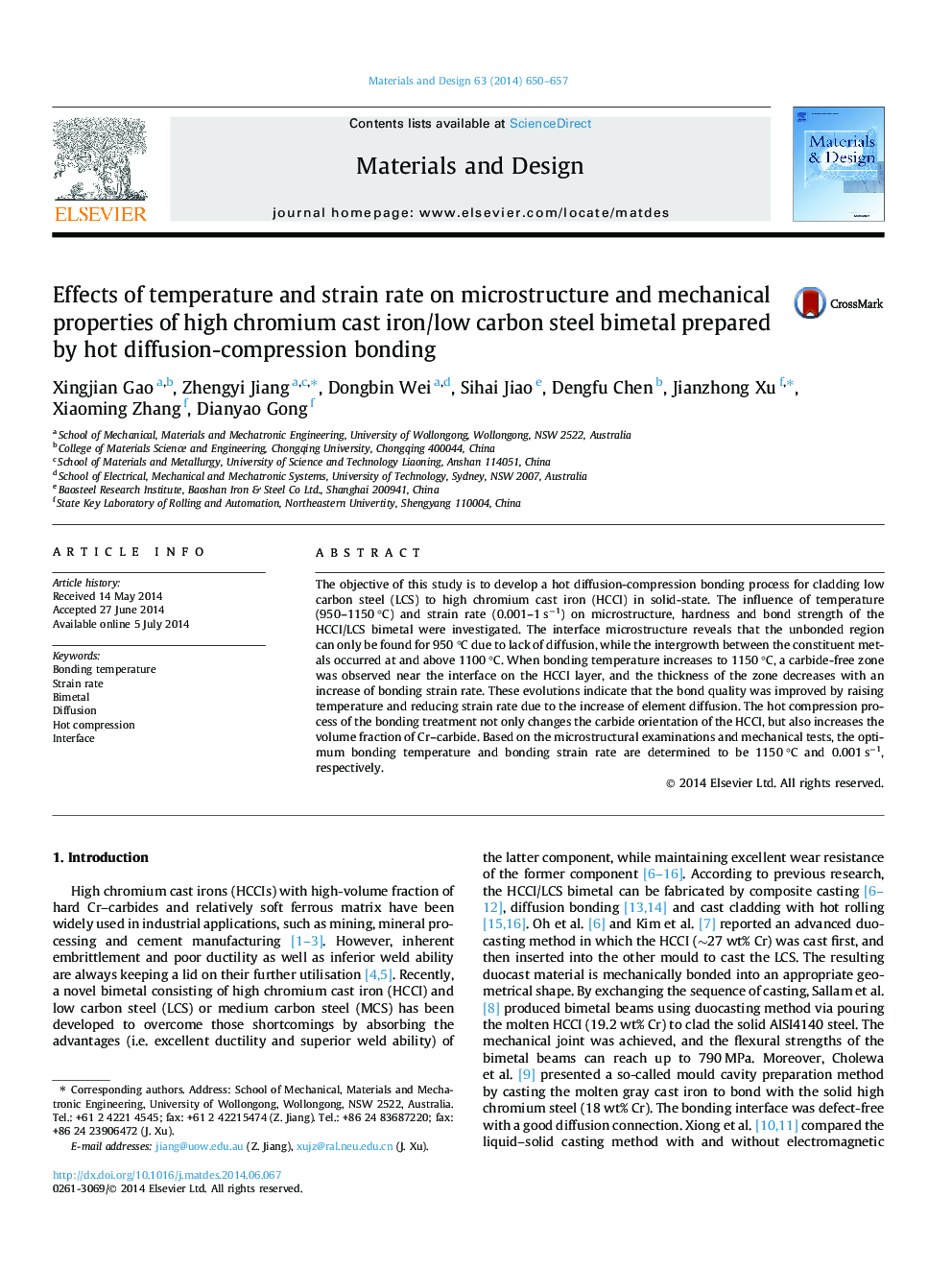| کد مقاله | کد نشریه | سال انتشار | مقاله انگلیسی | نسخه تمام متن |
|---|---|---|---|---|
| 829048 | 1470334 | 2014 | 8 صفحه PDF | دانلود رایگان |
• The cladded high chromium cast iron can be forged severely with crack-free.
• Intergrowth and carbide-free zone in interface region were found.
• The bonding process changes the carbide orientation of the high chromium cast iron.
• The volume fraction of Cr–carbide increases significantly with bonding treatment.
• The optimum bonding conditions were obtained.
The objective of this study is to develop a hot diffusion-compression bonding process for cladding low carbon steel (LCS) to high chromium cast iron (HCCI) in solid-state. The influence of temperature (950–1150 °C) and strain rate (0.001–1 s−1) on microstructure, hardness and bond strength of the HCCI/LCS bimetal were investigated. The interface microstructure reveals that the unbonded region can only be found for 950 °C due to lack of diffusion, while the intergrowth between the constituent metals occurred at and above 1100 °C. When bonding temperature increases to 1150 °C, a carbide-free zone was observed near the interface on the HCCI layer, and the thickness of the zone decreases with an increase of bonding strain rate. These evolutions indicate that the bond quality was improved by raising temperature and reducing strain rate due to the increase of element diffusion. The hot compression process of the bonding treatment not only changes the carbide orientation of the HCCI, but also increases the volume fraction of Cr–carbide. Based on the microstructural examinations and mechanical tests, the optimum bonding temperature and bonding strain rate are determined to be 1150 °C and 0.001 s−1, respectively.
Journal: Materials & Design - Volume 63, November 2014, Pages 650–657
